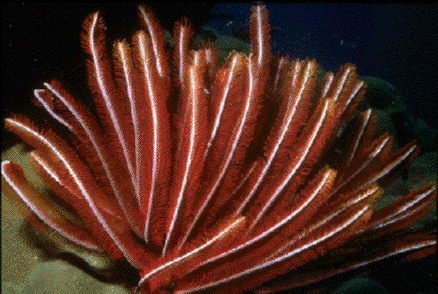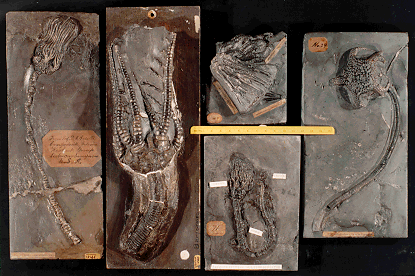Introduction to the Crinoidea
Sea lilies and feather stars. . .




Stalked crinoids, or "sea lilies", lived attached to the bottom, and filtered food particles from the currents flowing past them. The extant Crinoids are the only remaining attached suspension-feeding echinoderms. This makes them an important group for Paleontologists studying the numerous extinct attached suspension-feeding echinoderms because they have only the living crinoids to examine as an example of this ancient mode of life.
The living stalked crinoids mostly inhabit deep water and are therefore difficult for the average underwater enthusiast to observe. At the top of the page is a living specimen of a comatulid - an unstalked crinoid, or "feather star." It superficially resembles a starfish, but the mouth faces up, and the comatulid crawls by "walking" on specialized structures called cirri.
Click on the buttons below to learn more about the Crinoidea.


